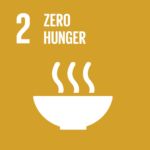Crops grown under elevated atmospheric carbon dioxide conditions are showing significant declines in mineral, protein, and vitamin content—deficiencies that could have severe consequences for global nutrition.
As the planet’s carbon dioxide levels reach unprecedented heights, scientists are raising alarms about a troubling side effect: our food is becoming less nutritious. Plants grown under elevated atmospheric carbon dioxide conditions are showing significant declines in mineral, protein, and vitamin content—deficiencies that could have severe consequences for global nutrition, particularly in countries like India.
According to a recent review published in Trends in Plant Science, nearly all C3 plants, which include staple crops like wheat, rice, barley, and oats, are affected by the rising carbon dioxide levels. The review, conducted by scientists from France, found that these plants exhibit reductions in key nutrients such as nitrogen, phosphorus, potassium, iron, zinc, magnesium, and sulfur when exposed to higher carbon dioxide concentrations. This discovery is particularly concerning given that atmospheric carbon dioxide levels have increased by 50 percent since the pre-industrial era, reaching 424 parts per million in 2023—a new record.
RELEVANT SUSTAINABLE GOALS



Nutritional Impacts on India’s Agricultural Landscape
India, a country already grappling with significant nutritional challenges, could face even greater difficulties as crops become less nutritious. The Global Hunger Index (GHI) 2022 ranked India 107th out of 121 countries, with a hunger situation classified as “serious.” The country also has the highest child wasting rate in the world, a condition where children are dangerously underweight for their height. As crops lose their nutritional value, the implications for public health, particularly for vulnerable populations, could be dire.
“These findings are particularly worrisome for India, where meeting food and nutrition requirements is already a challenge,” said Dr. Hemapriya Natesan, Founder & CEO of My Little Moppet, an e-commerce platform for children’s food products. “Early food choices are crucial for establishing healthy eating patterns, and with the declining nutritional content in staple crops, providing optimal nutrition is becoming increasingly difficult.”
The Vicious Cycle of Elevated Carbon Dioxide and Soil Health
Elevated carbon dioxide levels not only impact the nutritional quality of crops but also disrupt soil health, complicating sustainable agricultural practices. “When plants are exposed to more carbon dioxide, they undergo increased photosynthesis, which leads to more biomass,” explained G. Ravikanth, Associate Professor at the Suri Sehgal Centre For Biodiversity And Conservation at the Ashoka Trust for Research in Ecology and the Environment (ATREE), Bangalore. “This increased demand for nutrients strains the soil, and the altered carbon dioxide levels also affect soil microflora, impacting decomposition rates and nutrient availability.”
This disruption creates a vicious cycle where crops become increasingly dependent on external nutrients, making it harder to grow them sustainably. India’s soil, already at high risk from threats like pollution, intensive agriculture, and climate change, faces further challenges as a result of these changes.
The Search for Solutions
Addressing these challenges requires innovative approaches both in the field and at the policy level. Ravikanth suggests that one solution could be to grow plants that better assimilate nutrients from the soil and produce optimal yields. Research trials are currently underway at institutions like the University of Agricultural Sciences, GKVK, in Bengaluru.
Lewis H. Ziska, Associate Professor in the Environmental Health Sciences at the Mailman School of Public Health, Columbia University, emphasized the need for diversity in crops as a potential solution. “Encouraging diversity in both time (crop rotation) and space (planting different crop lines in the same location) is absolutely essential in addressing the nutrition issue,” Ziska said. He also called for policy-level incentives to promote the cultivation of crop lines with higher nutrient content.
On a more immediate level, Natesan urged consumers to focus on more traditional grains and healthier diets free of chemical inputs. “While climate change mitigation requires long-term solutions, we can start by addressing these nutritional deficiencies now, to the best of our abilities,” she said.
As global carbon dioxide levels continue to rise, the impact on our food supply is becoming increasingly clear. Without swift action to adapt our agricultural practices and diversify our diets, the world could face a future where food is plentiful, but far less nourishing.
CITATION:
Gojon A, Cassan O, Bach L, Lejay L, Martin A. The decline of plant mineral nutrition under rising CO2: physiological and molecular aspects of a bad deal. Trends Plant Sci. 2023 Feb;28(2):185-198. doi: 10.1016/j.tplants.2022.09.002. Epub 2022 Nov 3. PMID: 36336557.
Chunwu Zhu et al., Carbon dioxide (CO2) levels this century will alter the protein, micronutrients, and vitamin content of rice grains with potential health consequences for the poorest rice-dependent countries.Sci. Adv.4, 2018.
You may also be interested in :
Southeast Asia Faces Growing food Insecurity Amid Climate Change Concerns




